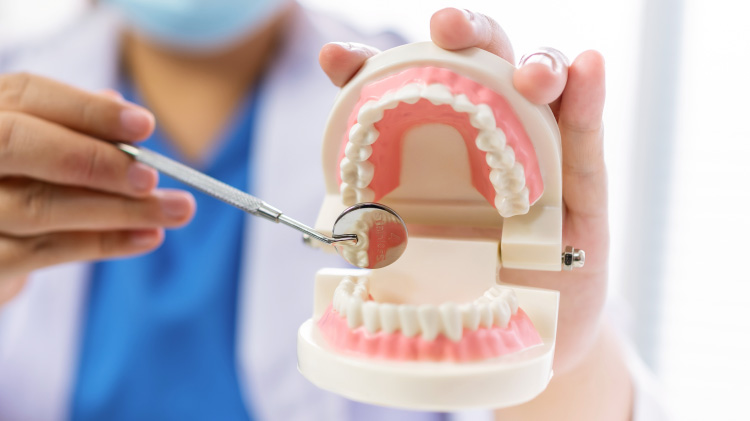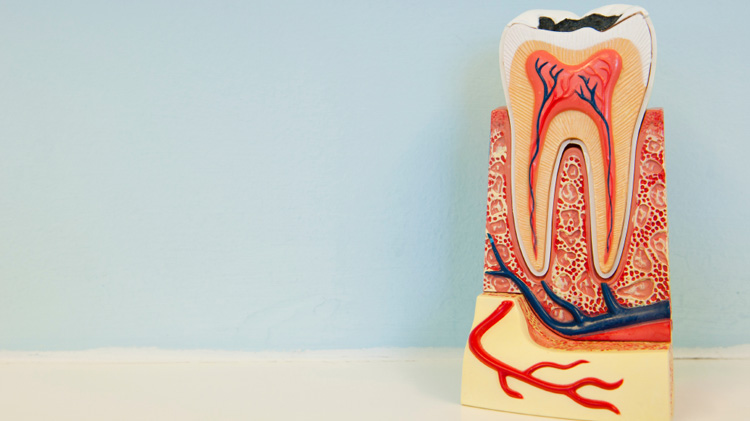Why You Should Know About Tooth Anatomy
People know they want their teeth to be free of pain and give them bright, attractive smiles. But not everyone knows what teeth are made of, and knowing can help you understand why particular aspects of home oral care are important and why your dentist recommends certain treatments. Accordingly, we at Comfort Care Family Dental would like to share this dental anatomy lesson with our Naperville, IL patients (and any other interested parties.)
Tooth Anatomy from the Outside In
The first thing to know about human teeth anatomy is that teeth aren’t the same all the way through. They have layers, a bit like certain candy bars. To understand tooth anatomy, it’s necessary to consider it one layer at a time. Moving from the outside in, you have the following:
Tooth Anatomy: Tooth Enamel
Tooth enamel is the exterior of the tooth. It has the highest percentage of minerals (hydroxyapatite, a crystalline calcium phosphate, mainly) in the human body and is the hardest substance in the body.
Unless it gets stained or its appearance is otherwise marred, tooth enamel makes the teeth white, but it’s primary purpose is to protect them and keep you from feeling discomfort from pressure, heat, or cold as they go about their work. That’s why this particular feature of tooth anatomy needs to be so hard, why Nature doesn’t run nerves through it, and why it’s possible for a tooth to endure minor chips and cracks without the mouth feeling any different.
It’s important to understand, though, that while tooth enamel is armor, it’s not indestructible. When you eat or drink something other than water, the bacteria that live in everyone’s mouth combine with sugars to make acid that temporarily softens and attacks it. At the same time, the bacteria also combine with mucus and food particles to make a sticky, colorless coating called plaque, which over time hardens into a harmful substance called tartar. All of this can lead to cavities, infections, and periodontal disease (gum disease.)
Thus it’s important to brush and floss in an effective daily oral routine and just as important to see your dentist for regular checkups and cleanings (usually twice a year, more often if recommended.) No matter how diligent you are, you’re likely to miss some of the plaque, and once it turns into tartar, you can’t get rid of it at home. Only a professional cleaning can do that.
The layer under the tooth enamel is the dentin.
Tooth Anatomy: Dentin
Dentin is porous, yellow calcified tissue that makes up most of the tooth. Also containing hydroxyapatite, this feature of tooth anatomy is hard, but less crystallized and thus less hard that the enamel it supports.
It’s when damage reaches the dentin that people develop tooth sensitivity. This exposure can result from receding gums, gum disease, old age, or even brushing too hard or using certain tooth-whitening products. One it does, you can experience pain from eating things that are hot, cold, sweet, or acidic. Even breathing cold air can hurt.
Under the dentin, at the core of the tooth, is the pulp.
Tooth Anatomy: the Pulp
At the center of the tooth are blood vessels and nerve endings. A mature tooth can continue to function without pulp (this is why a root canal procedure is feasible), but research has shown that if it has pulp, the tooth is better able to defend against harmful microbes.
If this feature of tooth anatomy does become infected, though, the consequences can be severe. The inflammation and resulting toothaches can be extremely painful. Infection can spread to tissue around the tooth producing dental abscesses and infections of the root and jawbone.
Infections in the lower jaw can lead to parapharyngeal abscess and Ludwig’s angina among other serious conditions. Infections in the upper jaw can reach the sinuses, eyeballs, and brain. Oral sepsis can even be fatal if it goes untreated.
Clearly, you would prefer that things not go anywhere near that far. Fortunately, regular dental checkups allow your dentist to catch and treat problems in their early stages, when any symptoms are comparatively mild and intervention is relatively easy.
The other fundamental component of dental anatomy is the cementum.
Tooth Anatomy: Cementum
Cementum is somewhat analogous to tooth enamel. It sheathes the roots of a tooth as the enamel covers the part you can see. Its primary function is help anchor a tooth firmly in place, but it also plays a role in healing and repair.
Sometimes as a result of the aging process, gums can recede and expose the cementum. If this happens, there’s a possibility it will get abraded away.

Tooth Anatomy from Top to Bottom
Just as teeth aren’t the same all the way through, they’re not the same all the way down their length. So we need to consider them from top to bottom beginning with the crown.
Tooth Anatomy: the Crown
Technically, this element of dental anatomy is the part of the tooth covered by enamel. That means it’s the part that rises above the gum. The very top of the crown is the biting surface that chews your food.
Tooth Anatomy: the Root
A two-pronged structure, this is the part of the tooth that runs through the gum and anchors the tooth in bone via the periodontal ligaments. You can’t see it, or at least you shouldn’t be able if your gums are in good shape.
Tooth Anatomy: The Types of Teeth
As you can readily see by looking in your own or anybody’s mouth, not all teeth are the same. That’s because they have specialized functions related to eating and chewing. These are the different kinds of teeth:
- Incisors are the eight teeth in the front of your mouth. They cut food.
- To either side of the incisors are the pointed teeth called canine teeth. They hold food in place to aid in the process of tearing it apart.
- Beside the canines are the “transitional” teeth called premolars, also known as the bicuspids. They have properties of both canine teeth and molars and shift food from one to the other.
- At the back of the mouth are the molars. The molars grind your food prior to swallowing.
We at Comfort Care Family Dental hope you’ve found this explanation of tooth anatomy interesting. If you’re in or near Naperville, IL, we invite you to call us at (630) 369-0111 to schedule an appointment for any and all oral care needs.


